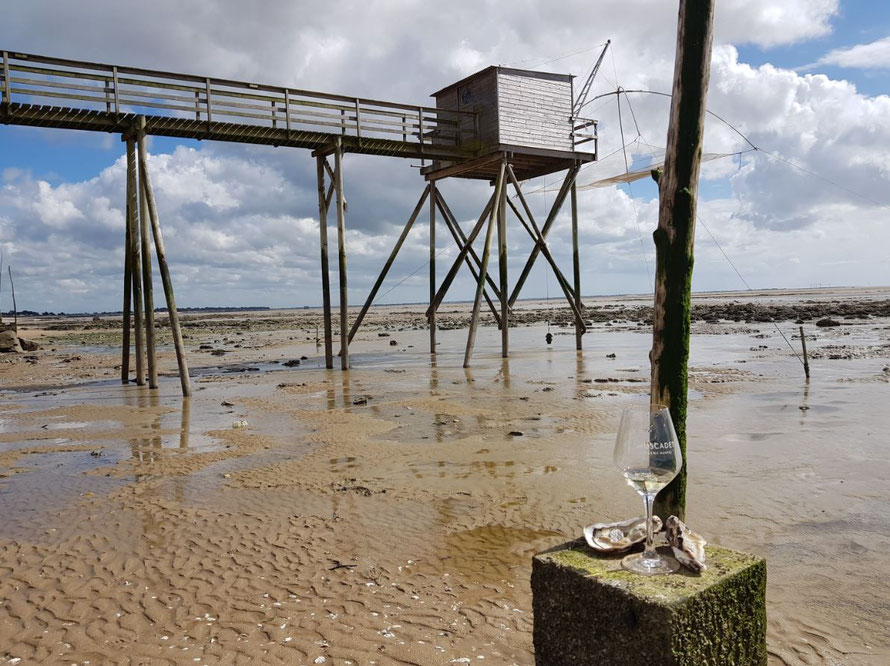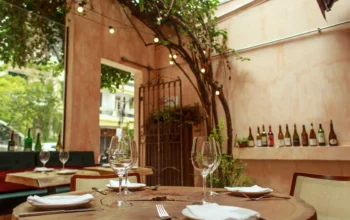Muscadet is a classic coastal wine from Le Pays Nantais. In some vineyards, you can hear the Atlantic rushing by and smell the oysters. No wonder the crispy wine with its salty aromas goes perfectly with fruits de mer. But, once you dive deeper into the region, you will discover that Muscadet has more flavours to offer. Therefore, a Route des Terroirs.
BY MAGDA VAN DER RIJST
How confusing can the world of wine be? Muscadet is the name of a white wine, but it does not refer to a wine region, but to a grape which is then officially called melon. Muscadet is the local name for melon de Bourgogne, a grape variety that moved from Burgundy to the Loire centuries ago and caused a furore there as the wine Muscadet. At the end of the last century, Muscadet de Sèvre et Maine was unstoppable, but virtually nothing was left of that star status by 2005. Much to the chagrin of winemakers in Le Pays Nantais: the area where Muscadet originates.
Salt on the skin
Le Pays Nantais is the land around the city of Nantes. It lies to the far west in the Loire region, close to the Atlantic Ocean. The environment here is a bit Breton, with its rugged, weathered coastal towns built of anthracite-coloured rock. It is a wet area, not only because it averages just under 800 millimetres of precipitation - as much as Amsterdam - but mainly because of its bodies of water. Apart from the sea, there is Le Lac de Grand-Lieu, a large lake in the heart of Le Pays Nantais, the rivers Sèvre et Maine with numerous tributaries, and, of course, the Loire. The predominantly flat, polder-like landscape is regularly blown by fresh winds. Muscadet has small berries with firm skins that can withstand the cold. Fortunately, the sun also makes enough hours there for the grapes to ripen. Although you can generally say Muscadet tastes fresh, dry and cool, with more salty and mineral notes than fruity aromas, you can clearly taste differences between one wine and another. This variation is mainly due to the composition of the soil.
Route des terroirs
To really understand the region, it is necessary to delve somewhat into its geology. Le Pays Nantais belongs to the Massif Armoricain, geologically one of the oldest areas in France. Its bedrock consists of rocks formed long ago by the solidification of a molten rock mass (magma) combined with metamorphic rocks, which later formed again from those igneous rocks. Examples of igneous rocks are granite and gabbro, of metamorphic rocks gneiss, schist and amphibolite: names you regularly come across on Muscadet labels. Depending on the location of the vineyard - more or less on the coast, in the plain or on a slope - the top layer consists of sand, clay, quartz and loess. Because Le Pays Nantais has varied soils that give distinctly different wines, in 2002 La Fédération des Vins de Nantes took on the task of meticulously recording the different terroirs and arriving at ten different cru. Each cru represents a specific terroir that can produce characterful, unique Muscadets. Three cru have now been officially recognised, but whether the terroir is certified or not, it is already well worth taking a tour of the various cru.
Clisson: medieval pride
We start in Clisson, one of the three official cru named after a medieval town. Clisson is the pride of Le Pays Nantais because the town was largely spared in the 18th century, during the civil wars in the Vendée. Its 11th-century fortress and 15th-century castle and market halls are impressive. In and around Clisson, the soil consists of granite with a top layer of sand and pebbles. It forms the basis for powerful, compact wines with a firm structure. According to legal regulations, a Muscadet from Clisson must lie sur lie for at least 24 months, but 36 months is more common.
Read the full story in WINELIFE #64. You can order here.
Don't want to miss a single edition? Subscribe then subscribe to Winelife magazine now!




